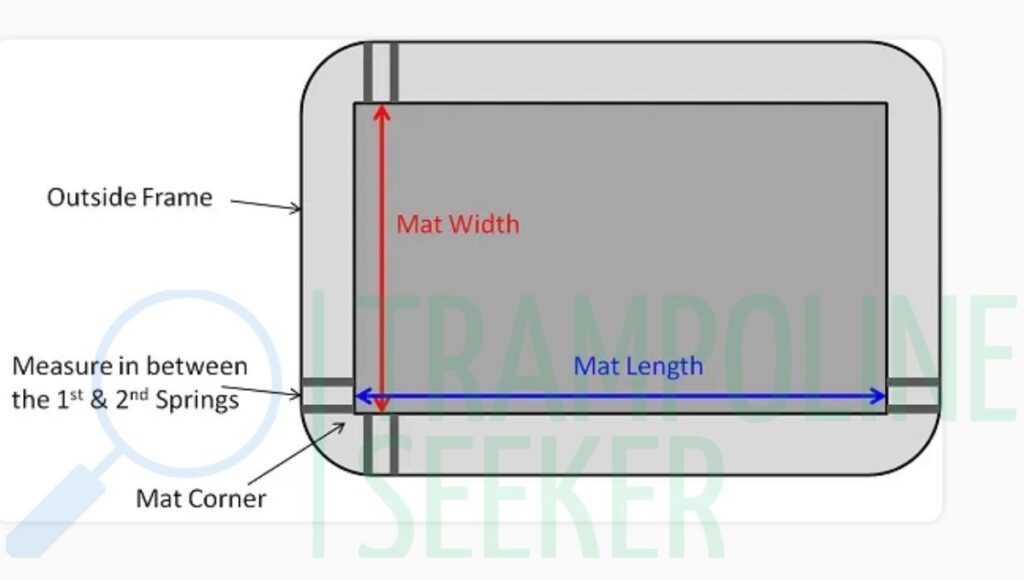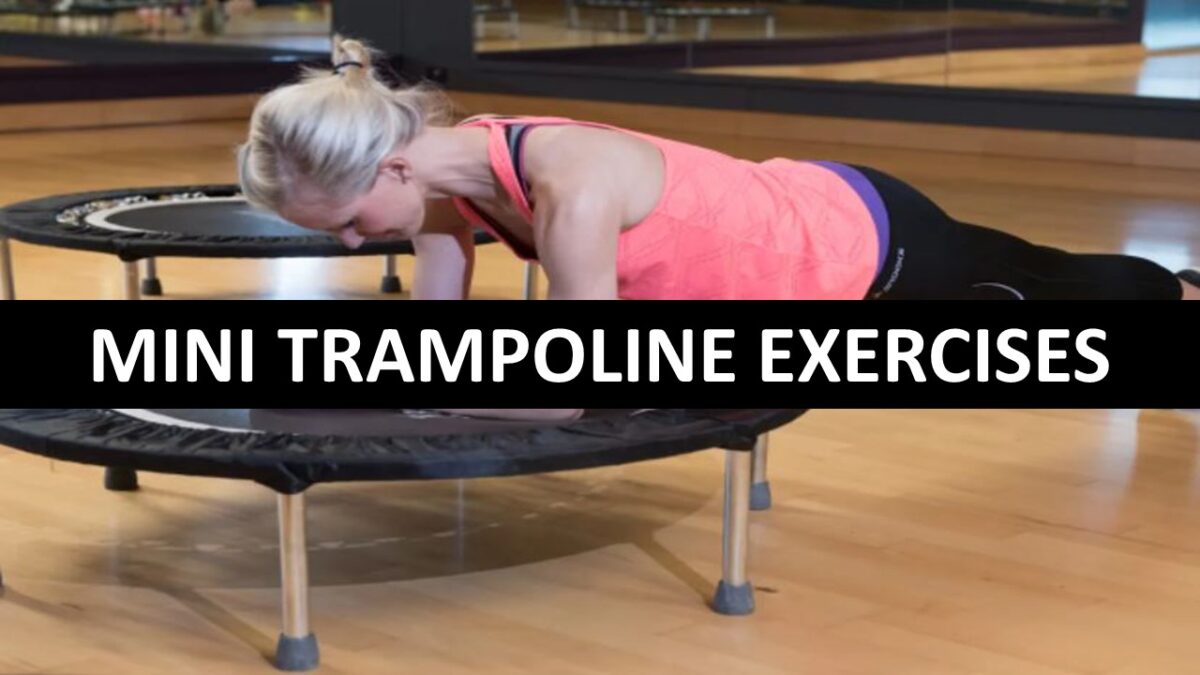I often get asked how to properly measure the mat of a rectangular trampoline. With so much confusing and contradictory information out there, it can be tricky to figure out the right way to get accurate measurements.
That’s why I’ve created this complete guide on 🔎 how to measure a rectangle trampoline mat, based on my extensive expertise and the latest industry standards.
How to Measure a Rectangle Trampoline Mat – Short Answer
🚨 Remove mat and lay flat
😃 Measure length edge to edge
😃 Measure width between longer edges
🤔 Account for size inconsistencies
👉 Measure relaxed spring length
👉 Count number of v-rings
👉 Tally springs along length
👉 Tally springs along width
📑 Record all measurements
🔎 Verify vs product labeling
🛒 Use numbers to order replacements
👉 Why Proper Measurements Matter
Getting accurate measurements of your rectangular trampoline mat is crucial for several reasons:
- Ensures proper fit of replacement mats, safety pads, enclosures
- Allows calculation of correct space needed for safe trampoline setup
- Verifies the actual size in case the “nominal” size differs from the real dimensions
- Prevents purchasing the wrong accessories or mats that don’t fit
Without precise numbers, you risk buying products that leave dangerous gaps or have unsafe looseness. 🚨 We don’t want any accidents happening!
📏 Equipment Needed
Gather this equipment before starting to measure the mat:
- Cloth measuring tape
- Notepad and pen 🖊️ for recording numbers
- Chalk or marker (optional for marking v-rings)
- Camera 📸 to document for future reference
Step-by-Step Instructions

Follow these 7 key steps to get foolproof measurements:
1. Remove The Mat (If Possible)
Ideally, fully remove the mat from the trampoline frame before measuring. This allows the mat to lay completely flat for the most accurate numbers.
However, if the mat is ripped or has a large hole, leave it attached to the frame and skip to Step 2.
2. Measure Length and Width
Lay the mat flat on the ground or measure while still attached to the frame.
To get length: 😃 Measure from edge to edge across the two shorter ends of the rectangular mat.
To get width:
Measure between the longer edges furthest apart.
Record both length and width.
3. Account for Inconsistencies
🤔 It’s critical to note that dimensions can vary significantly between brands, even for standard sizes like 8ft x 12ft. Always measure YOUR exact trampoline. Never rely on approximate “nominal sizes”.
4. Measure Spring Length
Determine the relaxed, non-stretched length of a single trampoline spring. This ensures compatibility and proper tensioning if replacing springs.
To measure: 👉 Gently remove a spring
👉 Measure from hook end to hook end
👉 Record measurement
5. Count V-Rings
V-rings attach the mat edge to the springs. Replacement mats must have the same quantity.

To get the count:
👉 Mark a starting point with chalk/marker
👉 Walk around mat and tally quantity of v-rings
or…
👉 Count number of holes along frame if mat is removed
Record the total v-ring number.
6. Check Spring Quantity
Replacement mats must have holes to match the number of springs connecting to the frame.
For rectangular trampolines:
👉 Count number of springs along mat’s length
👉 Count number of springs along width
Record both quantities separately.
7. Measure Frame (If Needed)
If the mat is damaged beyond measurement or entirely missing, measure the frame instead. This gives the outer dimensions.
👉 Measure across frame along length
👉 Measure along width
📑 Recording Your Measurements
To keep everything straight, record all your measurements together in a table like this:
| Measurement | Your Numbers |
|---|---|
| Mat Length | |
| Mat Width | |
| Spring Length | |
| V-Rings Count | |
| Springs Along Length | |
| Springs Along Width | |
| Frame Length (If Needed) | |
| Frame Width (If Needed) |
What To Do With Your Measurements
Once you’ve carefully measured and recorded all numbers:
- First, VERIFY if the mat size truly matches “standard” dimensions or the advertized size. There can be surprising inconsistencies.
- Use the figures to order a new replacement mat or other accessories
- Provide your counts and measurements if contacting manufacturers for help finding a suitable replacement
- Keep the info on file in case you need to replace parts again down the road
Accurate measuring = safe, long-lasting trampoline enjoyment! 😊
Final Words
Getting accurate measurements of your rectangular trampoline’s mat, springs, and frame is crucial for safety and finding suitable replacement parts. By following this guide’s 7 key measurement steps methodically, you can get precision numbers reflecting the real-world dimensions of your unique trampoline set up. Record your measurements carefully, verify against product labeling, and double-check numbers if ordering replacements. Precise figures help guarantee proper fitting mats, enclosures, adequate clearance, and conscientious tensioning when installing new components. Staying on top of measuring ensures your trampoline stays bounce-worthy for years of family fun!
🎾 Related FAQs
Do I need to remove the mat completely before measuring?
Ideally yes, removing the mat allows it lay flat for most accurate measurements. But if mat is ripped or has holes, it’s OK to measure while attached to frame.
What if my trampoline doesn’t have standard sizing?
Even if size labeling differs from standard industry dimensions, following these measurement steps will give real-world numbers to find accessories that fit.
Should I measure just length and width or other parts too?
Measuring length/width is a start, but spring length, v-rings count and spring quantity along mat edges are also essential for compatibility.
What to do if number of springs/holes don’t match replacement mat?
If hole counts differ, replacement springs can often be added separately to match mat. Consult the manufacturer if unsure.
My mat is really worn. Can frame size substituted if mat can’t be measured reliably?
Yes! If mat is too damaged to measure directly, the frame dimensions can provide outer length/width boundaries.
Articles You May Like to Read:













